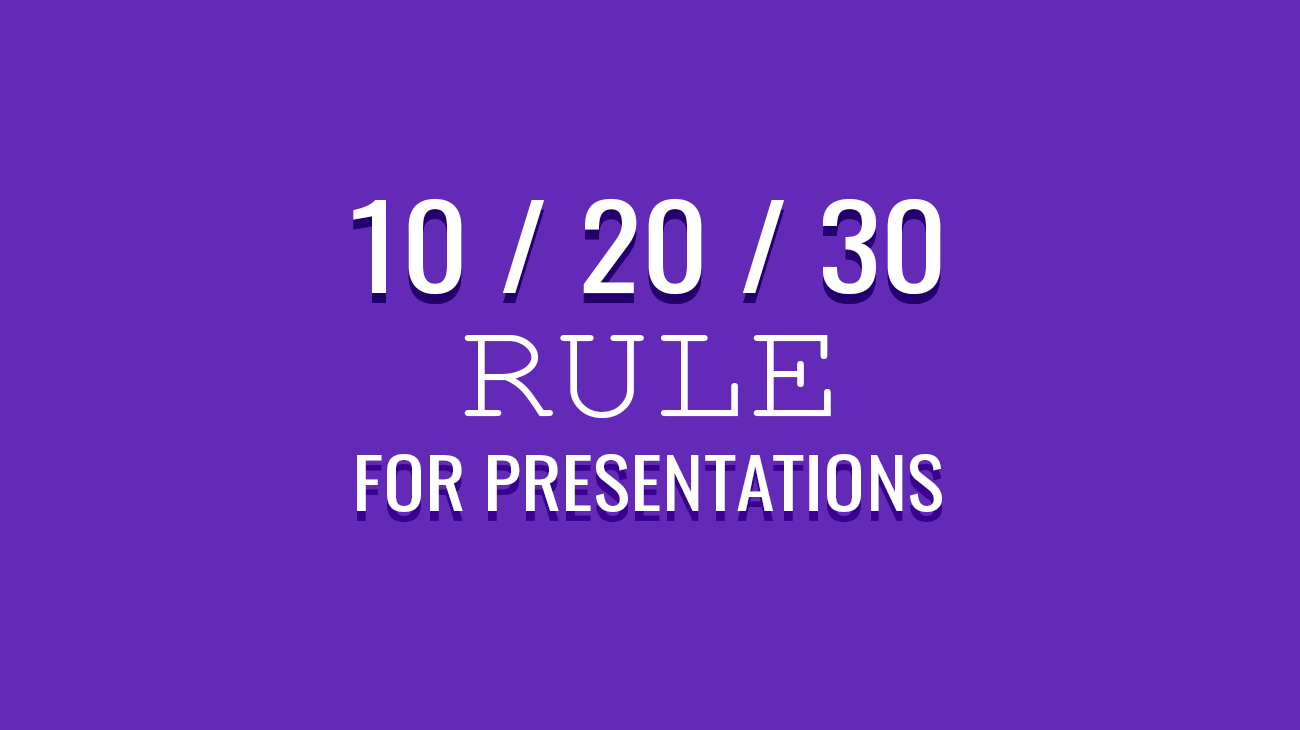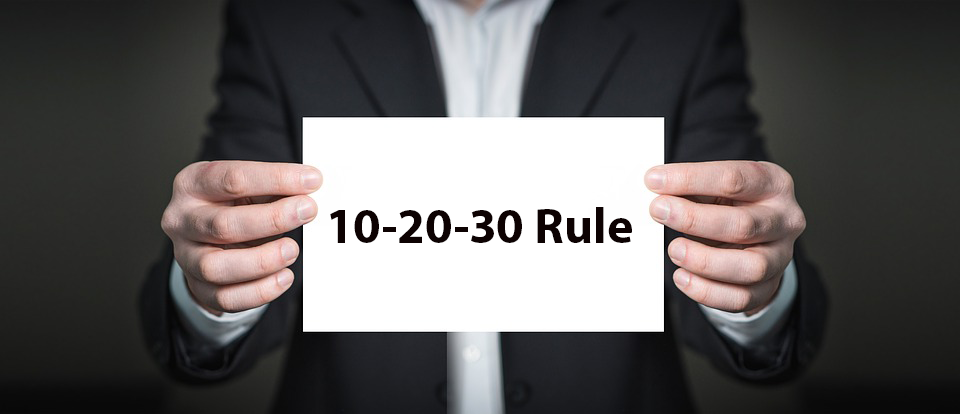
Ever wondered how many slides are optimum for a presentation, what duration should your presentation be, and what should be your font size? A famous American marketing specialist known as Guy Kawasaki came up with a set formula to determine all these factors. This is known as the 10-20-30 rule. If you are wondering how you can use the 10 20 30 rule for Presentations and its relevance for your PowerPoint presentations, allow us to explain all that you need to know.
What is the 10 20 30 Rule for Presentations?
The 10 20 30 Rule for presentations implies that you should only have 10 slides, deliver them in no more than 20 minutes and keep your font at 30 points.
While 10 20 30 rule might appear a bit bizarre at first, it is worth mentioning here that the rule was the brainchild of none other than Guy Kawasaki! For those of you who might not be familiar with the name, Guy Takeo Kawasaki was the founder of the 10 20 30 Rule for Presentations. He is one of the pioneers of the Silicon Valley, credited with marketing Macintosh computers during the 1980s. A venture capitalist, marketing specialist, and the man responsible for making the word evangelist popular in marketing, his words are not to be taken lightly. Especially if you are on your way to delivering a pitch deck!

How to use the 10/20/30 Rule for Presentations?
To use the 10 20 30 rule in your PowerPoint presentations, you simply consider the three points mentioned below.
1. Limit Your Presentation to 10 Slides
For some presenters, this might appear to be a bit difficult to manage at first. We are so used to delivering lengthy slide decks that many of us tend to be less considerate of our audience and how much can they absorb in a single presentation session. 10 Slides is all you need according to marketing genius Guy Kawasaki to deliver your presentation.
2. Deliver Your Slides in 20 Minutes
20 minutes is a benchmark that can help you deliver your slides effectively and also leave some room for answering queries and interacting with the audience. Using 20 minutes as a benchmark, you are likely to avoid boring your audience. Anything above that can be hard to keep them attentive. Furthermore, 20 minutes can also be a good benchmark to account for possible delays. Keeping your presentation duration neither too long nor too short.
3. Keep Your Font at 30 Points
When was the last time you remember seeing a presentation where you could read each slide clearly? Most presenters, in at least a few of their slides, often don’t have the right font size. It can be hard for a lot of people in the audience to read. It’s not just that people with weak eyesight or ones who might be of old age to see anything you have posted in your slides. It’s rather the 8-10 point font and a lot of text crammed in a slide that can be difficult to comprehend. So, keep your font at 30 points to ensure everyone can read it.
Why Should You Use the 10 20 30 Rule for Your Presentations?
To Avoid Death by PowerPoint
Guy Kawasaki referred to the Ménière’s disease when referring to his rule, as an example to explain how bad marketing presentations have become. The Ménière’s refers to a medical condition where people have hearing loss, vertigo, and a constant ring in their ears. Imagine someone feeling the same way when you are delivering a presentation. This can however be avoided using Guy Kawasaki’s rule. In fact, one of the top reasons for using the 10 20 30 rule is to in fact avoid death by PowerPoint.
To Make it Easy to Create and Present Slides
The 10 20 30 rule makes it easy to create and present slides and gives a formula where you are likely to present something short and crisp before an attentive audience.
To Account for Loss of Time
According to Guy Kawasaki, it is quite likely that you will have issues with setting up hardware, or some people in the audience might be late or other issues might cause a delay at the time of delivering your presentation. 20 minutes gives you enough time to present and have a meaningful interaction while accounting for possible delays. This duration is neither too short nor long enough to put your audience to sleep.
To Ensure Your Pitch Deck Does Not Fall on Deaf Ears
If you are delivering a pitch deck, the 10 20 30 rule becomes all the more necessary. You can avoid putting your potential investors to sleep with your slide deck by using the simple formula to keep your slides limited, deliver them on time and ensure everyone can read your slides clearly, regardless of where they are sitting at the venue.
To Keep You Sharp During a Presentation
If you have 10 slides and a 30 point font, the chances are you won’t have the time to simply read from slides. This means you will have to remain sharp and rely on a few points in each slide to build your presentation and deliver the fine details on your own. This is a much better approach adopted by top presenters, as compared to reading through slides, which is not likely to win you any points with the audience. Hence, the rule is meant to keep the audience engaged and the presenter sharp during a public speaking session.
Final Words
The 10 20 30 rule for presentations provides a good way to describe the different measures you can take to make your presentation short, concise, and easy to present. The rule can help you become an effective presenter and to deliver the required information in a manner that is likely to stick with your audience. You can also incorporate other public speaking and presentation techniques along the way, including the principle of recency and the rule of three.



